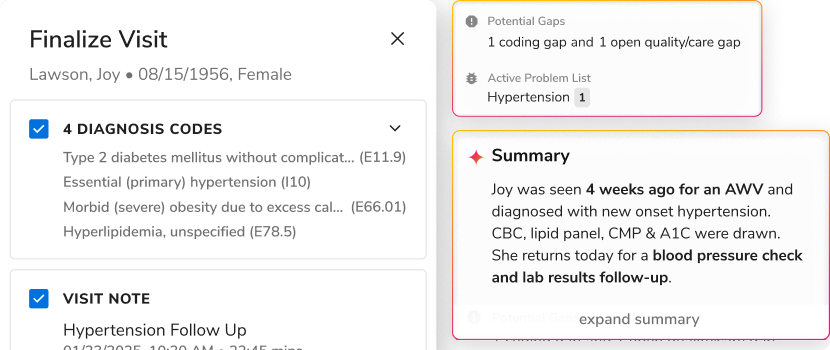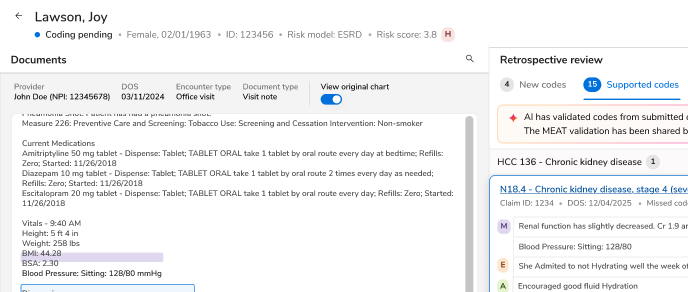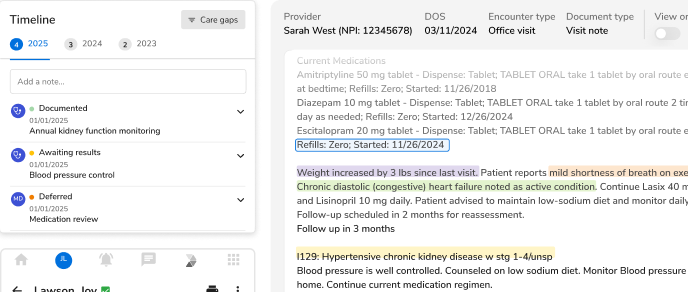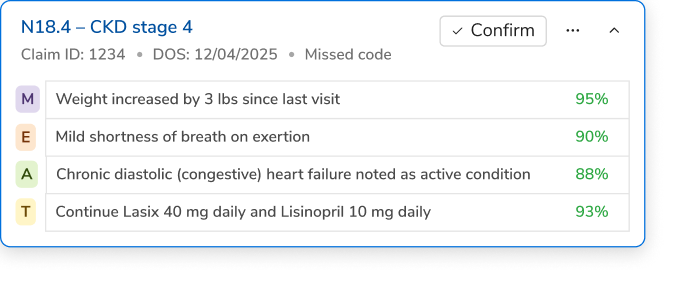A Guide to Chronic Care Management

In the last few years, one of the biggest challenges healthcare has faced on the road to value-based care has been chronic care management. The healthcare organizations we have today are well-equipped to treat acute episodes or countering emergencies, but there has to be a greater focus on managing chronic conditions and comorbidities. A report by the Centers for Disease Control and Prevention(1) shows the glaring statistics:
- Chronic diseases claim 7 out of 10 deaths in the U.S. and are responsible for more than 1.7 million deaths every year.
- 45% of all Americans have at least one chronic condition.
- Up until 2012, about 117 million people had one or more chronic conditions, accounting for 86% of the entire U.S. healthcare expenditure.
The fact that chronic conditions never exist in isolation and the threats relating to comorbidities only increase with age, it’s paramount that the focus shifts from treating acute episodes to manage chronic conditions and prevent them from occurring in the first place.
The case for transformation in care delivery
The issues related to chronic conditions are severe and complex. Managing chronic conditions is difficult as the conditions may either be connected or contribute to another. Apart from avoiding conflicting treatments, there are several cases that demand attention:
- Fragmented care delivery: Several patients report that they don’t have access to a well-informed coordinated care and some of them end up visiting an inappropriate care setting. In other cases, patients face troubles due to lack of coordination on providers’ end which may result in clashing treatments.
- An increase in risk factors: Over the years, owing to changes in lifestyle, living conditions, and pre-existing conditions, there has been an increase in disease-specific risk factors like obesity and diabetes, that may lead to serious cardiovascular and renal diseases.
- Managing multiple conditions:There is a greater need for coordination to achieve clarity on how to treat multiple conditions without bringing up potential complications that can be costly, severe, and even life-threatening.
- Increasing costs of care: Chronic conditions account for the lion’s share in the nation’s healthcare spending. Diabetes alone takes up more than $100 billion out of $3.2 trillion spent on healthcare(2).
CMS stepping up chronic care management
In January 2015, CMS came up with a Chronic Care Management(3) model that offered reimbursements to providers on a monthly basis for delivering quality care services to Medicare beneficiaries with two or more chronic conditions.
However, the adaption has been slower than it should have been, with almost half the practices(4) saying they were unaware that Medicare offered reimbursement for non face-to-face interactions. Apart from that, there are several other barriers along the way:
- Lack of time to offer extra guidance and reinforcements to patients.
- Cost concerns and ensuring adherence to care plans.
- Reimbursements to be performed using a certified electronic health record that is accessible to all members of the care team.
- Necessary patient consent along with $8 monthly copay.
Achieving ROI with chronic care management
There are several challenges with chronic conditions, true, but these issues are only going to grow in the coming years. It’s high time healthcare organizations analyze the financial and operational challenges and develop a simple, clear-cut plan that offers more coordination, integration, and the ability to track potential complications. Some possible steps that can be taken are:
- Figure out a plausible care management(5) plan.
- Create patient-specific care goals.
- Monitor the outcomes of interventions and pinpoint areas of focus.
- Address the needs and gaps in care.
Most of all, the emphasis should be on how can patients improve their lives. Patients are educated and aware of the conditions and the gravity and yet are unable to change their behavior. Physicians can step back and take a look at drivers that cause patients to change the course of their treatments. Physicians and care teams can improve communication with patients, interview them and allow them to participate in decision-making to engage and empower them. The aim is end-to-end population health management(6): to improve the quality of life and not just provide longevity. Only then we would be able to create(7) an impactful value-based ecosystem.
For more updates , Subscribe
Visit Innovaccer at Booth #1144 at AHIP 2017 to learn more and begin your journey to a data-driven healthcare

.png)





.png)









.svg)
.svg)

.svg)

